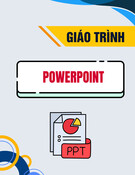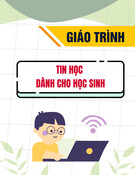ế
ắ ầ Phím T t C n Thi
t Visual Studio
ử ụ
ạ
ắ
ể
ạ
Trong lúc code các b n cũng nên s d ng các phím t
ả t sau đ tăng kh năng linh ho t .
ệ
ạ
ộ
Ctrl + K + C: vô hi u hóa m t vùng code thành d ng comment
i l nh trên
ể
ộ
ẻ ẽ
Ở
ả
s khác m t chút. Có th nhìn lên menu và kick vào:
các phiên b n th p h n có l
ạ ệ Ctrl + K + U: Hoàn l ơ ấ Edit => Avanced => Comment Slection
ạ
ặ
ứ
ẽ
ệ
ơ
ố ề
ỉ
ẩ
ẳ ự ộ
ể
i. Đôi khi b n copy code dán vào ho c lúc đ ng đ u ch nh. Trông nó s chuyên nghi p h n :D
t cấ ả
Phím th 2 là Format code cho ngay hàng th ng l gõ u thì nên dùng phím này đ Visual t Edit => Avanced => Format Document Ctrl + K + D : Format t
ạ
Edit => Avanced => Format Selection ọ Ctrl + K + F: Format vùng b n ch n
Ctrl+E, Crtl+W predefined for the Text Editor In the default keyboard mapping scheme the Edit.ToggleWordWrap command has the shortcut
ộ
ạ
ạ
ạ
ộ
ạ ấ
ộ
ế i l y thi u m t vài
ặ
ặ
ư ế
ể ạ
ườ
ệ
ấ
ạ
ớ
Xóa m t vài mã trong đo n code nhanh, b n đang gõ m t đo n code, l ch ?ữ ầ ỏ ạ ị i v trí c n đ t: Hãy đ t con tr t Nh n ấ Backspace đ xóa v bên trái ề ể ả Nh n ấ Delete đ xóa v bên ph i ể ư ấ Có th b n th y th
ề ng quá, nh ng lúc làm vi c m i th y nó linh ho t nh th nào :)
ọ
ệ ở ữ
ươ ẽ ấ ệ ợ
ầ ớ
ặ Đ t bookmark ! Vi c này cũng không kém ph n quan tr ng, khi l ặ đ t bookmark
ạ nh ng đo n mã c n t
ầ ườ i lui th
ng xuyên s r t ti n l
ề ng line code quá nhi u thì ệ i trong lúc làm vi c
ặ
ố ớ
i dòng c n bookmark
ầ ể
ỏ
ộ i đi m con tr chu t
ỏ ạ Đ i v i VS 2012: Đ t con tr t ộ ạ ạ Nh n ấ Ctrl + K + K : T o m t BM t ả ớ Nh n ấ Ctrl + K +N : Nh y t ế i BM ti p ả ớ Nh n ấ Ctrl + K +P : Nh y t i BM sau
ị ợ
ể ặ
ầ
ợ
Hi n th g i ý cú pháp ỏ ạ Đ t con tr t
i mã code c n g i ý:
ấ
ợ
ẽ ể ớ
ị ạ ầ ữ i l n n a các g i ý cú pháp liên quan. ề
ệ
ệ
ạ
ợ
ộ
Nh n Ctrl + Space : VS s hi n th l Trong VS lúc b n gõ code t
i đâu thì đ u có g i ý code hi n ra. C ng thêm vi c cài các plugin
ớ ế
ớ ế
ệ
ả
ạ
ạ
ờ
ỗ ợ h tr thì vi c ph i nh h t code không còn đáng lo ng i. B n hãy dành th i gian nh h t code
ấ ả
t c kho ng tr ng trong dòng code đ
ể
ấ
ỏ
ượ ộ
c ta bôi đen ! :)) ả
ố ả ệ ạ ạ i (t
i đi m con tr chu t). Xóa c dòng r t nhanh không
Ctrl + K + \ : Xóa t Ctrl + Shift + L : Xóa dòng hi n t ầ c n bôi đen
ổ
ỗ
ướ
ặ
i nó. N u b n cài Resharp ho c
ộ
ộ ớ ạ ị i v trí chu t v i dòng d ư ậ ấ ắ
ạ ế ẽ ỏ ạ
t, thì khí nh n nh v y nó s h i b n dùng cho bên nào ?
ọ
Shift + Alt + T : Đ i ch dòng t ẽ các plugin khác s xung đ t phím t ch n VS nhé
ế
ng.
ế
ữ ườ c bôi đen thanh ch th ữ ự ườ ng thành ch in HOA. th
ự ượ Ctrl + U : Bi n các ký t đ Ctrl + Shift + U : Bi n các ký t
ộ PageUp : Cu n trang code lên ố ộ PageDown : Cu n trang code xu ng
ủ
ạ ị
ỏ ạ
ế
ể
ạ
i v trí con tr
ỏ (N u có). B n mà đ con tr t
i mã
ườ
ệ
Shift + F12 : Tìm reference c a mã t ng thì không hi n gì đâu nhé th
General Shortcut
Description
Ctrl-X or Shift-Delete Cuts the currently selected item to the clipboard
Ctrl-C or Ctrl-Insert Copies the currently selected item to the clipboard
Ctrl-V or Shift-Insert Pastes the item in the clipboard at the cursor
Ctrl-Z or Alt-Backspace Undo previous editing action
Ctrl-Y or Ctrl-Shift-Z Redo the previous undo action
Ctrl-Shift-V or Ctrl-Shift- Insert Pastes an item from the clipboard ring tab of the Toolbox at the cursor in the file and automatically selects the pasted item. Cycle through the items on the clipboard by pressing the shortcut keys repeatedly
Esc Closes a menu or dialog, cancels an operation in progress, or places focus in the current document window
Ctrl-S Saves the selected files in the current project (usually the file that is being edited)
Ctrl-Shift-S Saves all documents and projects
Displays the Print dialog Ctrl-P
Switches from the design view to the code view in the editor F7
Switches from the code view to the design view in the editor Shift-F7
F8 Moves the cursor to the next item, for example in the TaskList window or Find Results window
Shift-F8 Moves the cursor to the previous item, for example in the TaskList window or Find Results window
Finds a reference to the selected item or the item under the cursor Shift-F12
Ctrl-Shift-G Opens the file whose name is under the cursor or is currently selected
Ctrl-/ Switches focus to the Find/Command box on the Standard toolbar
Ctrl-Shift-F12 Moves to the next task in the TaskList window
Ctrl-Shift-8 Moves backward in the browse history. Available in the object browser or Class View window
Alt-Left Arrow Go back in the web browser history
Alt-Right Arrow Go forward in the web browser history
Text navigation Shortcut
Description
Left Arrow Moves the cursor one character to the left
Right Arrow Moves the cursor one character to the right
Down Arrow Moves the cursor down one line
Up Arrow Moves the cursor up one line
Page Down Scrolls down one screen in the editor window
Page Up Scrolls up one screen in the editor window
End Moves the cursor to the end of the current line
Home
Moves the cursor to the beginning of the line. If you press Home when the cursor is already at the start of the line, it will toggle the cursor between the first non-whitespace character and the real start of the line
Ctrl-End Moves the cursor to the end of the document
Ctrl-Home Moves the cursor to the start of the document
Ctrl-G Displays the Go to Line dialog. If the debugger is running, the dialog also lets you specify addresses or function names to go to
Ctrl-] Moves the cursor to the matching brace in the document. If the cursor is on an opening brace, this will move to the corresponding closing brace and vice versa
Ctrl-K, Ctrl-N Moves to the next bookmark in the document
Ctrl-K, Ctrl-P Moves to the previous bookmark
Ctrl-K, Ctrl-I Displays Quick Info, based on the current language
Ctrl-Down Arrow Scrolls text down one line but does not move the cursor. This is useful for scrolling more text into view without losing your place. Available only in text editors
Ctrl-Up Arrow Scrolls text up one line but does not move the cursor. Available only in text editors
Ctrl-Right Arrow Moves the cursor one word to the right
Ctrl-Left Arrow Moves the cursor one word to the left
Ctrl-Shift-1
Navigates to the next definition, declaration, or reference of an item. Available in the object browser and Class View window. Also available in source editing windows if you have already used the Edit.GoToReference (Shift-F12) shortcut
Ctrl-Shift-2 Navigates to the previous definition, declaration, or reference of an item
Text manipulation Shortcut
Description
Inserts a new line Enter
Delete Deletes one character to the right of the cursor
Insert Toggles between insert and overtype insertion modes
Tab Indents the currently selected line or lines by one tab stop. If there is no selection, this inserts a tab stop
Shift-Tab Moves current line or selected lines one tab stop to the left
Deletes one character to the left of the cursor Backspace or Shift- Backspace
Ctrl-K, Ctrl-C Marks the current line or selected lines of code as a comment, using the correct comment syntax for the programming language
Ctrl-K, Ctrl-U Removes the comment syntax from the current line or currently selected lines of code
Ctrl-T or Shift-Enter Swaps the characters on either side of the cursor. (For example, AC|BD becomes AB|CD.) Available only in text editors
Ctrl-K, Ctrl-L Removes all unnamed bookmarks in the current document
Ctrl-M, Ctrl-O Automatically determines logical boundaries for creating regions in code, such as procedures, and then hides them. This collapses all such regions in the current document
Alt-Right Arrow or Ctrl- Spacebar Displays statement completion based on the current language or autocompletes word if existing text unambiguously identifies a single symbol
Ctrl-K, Ctrl-\ Removes horizontal whitespace in the selection or deletes
whitespace adjacent to the cursor if there is no selection
Ctrl-K, Ctrl-F Applies the indenting and space formatting for the language as specified on the Formatting pane of the language in the Text Editor section of the Options dialog to the selected text.
Ctrl-L Cuts all selected lines or the current line if nothing has been selected to the clipboard
Ctrl-Shift-L Deletes all selected lines or the current line if no selection has been made
Inserts a blank line above the cursor Ctrl-Enter
Ctrl-Shift-Enter Inserts a blank line below the cursor
Shift-Alt-T Moves the line containing the cursor below the next line
Ctrl-J Lists members for statement completion when editing code
Ctrl-U Changes the selected text to lowercase characters
Ctrl-Shift-U Changes the selected text to uppercase characters
Ctrl-Shift-Spacebar Displays a tooltip that contains information for the current parameter, based on the current language
Removes the outlining information for the currently selected region Ctrl-M, Ctrl-U
Removes all outlining information from the entire document Ctrl-M, Ctrl-P
Swaps the anchor and endpoint of the current selection Ctrl-R, Ctrl-P
Ctrl-M, Ctrl-L Toggles all previously marked hidden text sections between hidden and display states
Ctrl-K, Ctrl-K Sets or removes a bookmark at the current line
Ctrl-M, Ctrl-M Toggles the currently selected hidden text section or the section containing the cursor if there is no selection between the hidden and display states
Sets or removes a shortcut in the tasklist to the current line Ctrl-K, Ctrl-H
Enables or disables word wrap in an editor Ctrl-R, Ctrl-R
Shows or hides spaces and tab marks Ctrl-R, Ctrl-W
Deletes the word to the right of the cursor Ctrl-Delete
Ctrl-Backspace Deletes the word to the left of the cursor
Ctrl-Shift-T Transposes the two words that follow the cursor. (For example, | End Sub would be changed to read Sub End|.)
Display options on smarttag menu.Very useful for showing Ctrl-.[dot]
using/Imports options.
Text selection Shortcut
Description
Shift-Left Arrow Moves the cursor to the left one character, extending the selection
Shift-Alt-Left Arrow Moves the cursor to the left one character, extending the column selection
Shift-Right Arrow Moves the cursor to the right one character, extending the selection
Shift-Alt-Right Arrow Moves the cursor to the right one character, extending the column selection
Ctrl-Shift-End Moves the cursor to the end of the document, extending the selection
Ctrl-Shift-Home Moves the cursor to the start of the document, extending the selection
Ctrl-Shift-] Moves the cursor to the next brace, extending the selection
Shift-Down Arrow Moves the cursor down one line, extending the selection
Shift-Alt-Down Arrow Moves the cursor down one line, extending the column selection
Shift-End Moves the cursor to the end of the current line, extending the selection
Shift-Alt-End Moves the cursor to the end of the line, extending the column selection
Shift-Home Moves the cursor to the start of the line, extending the selection
Shift-Alt-Home Moves the cursor to the start of the line, extending the column selection
Shift-Up Arrow Moves the cursor up one line, extending the selection
Shift-Alt-Up Arrow Moves the cursor up one line, extending the column selection
Shift-Page Down Extends selection down one page
Shift-Page Up Extends selection up one page
Ctrl-A Selects everything in the current document
Ctrl-W Selects the word containing the cursor or the word to the right of the cursor
Ctrl-= Selects from the current location in the editor back to the previous location in the navigation history
Ctrl-Shift-Page Down Moves the cursor to the last line in view, extending the selection
Ctrl-Shift-Page Up Moves the cursor to the top of the current window, extending the selection
Ctrl-Shift-Alt-Right Arrow Moves the cursor to the right one word, extending the column selection
Ctrl-Shift-Left Arrow Moves the cursor one word to the left, extending the selection
Ctrl-Shift-Alt-Left Arrow Moves the cursor to the left one word, extending the column selection
Project related Shortcut
Description
Ctrl-Shift-B Builds the solution
Ctrl-N Displays the New File dialog. Note: files created this way are not associated with a project. Use Ctrl-Shift-A to add a new file in a project
Ctrl-Shift-N Displays the New Project dialog
Ctrl-O Displays the Open File dialog
Ctrl-Shift-O Displays the Open Project dialog
Shift-Alt-A Displays the Add Existing Item dialog
Ctrl-Shift-A Displays the Add New Item dialog
Ctrl-Alt-Insert Allows you to override base class methods in a derived class when an overridable method is highlighted in the Class View pane
Window manipulation Shortcut
Description
Shift-Alt-Enter Toggles full screen mode
Ctrl-+
Goes back to the previous location in the navigation history. (For example, if you press Ctrl-Home to go to the start of a document, this shortcut will take the cursor back to wherever it was before you pressed Ctrl-Home.)
Ctrl-Shift-+ Moves forward in the navigation history. This is effectively an undo for the View.NavigateBackward operation
Ctrl-F4 Closes the current MDI child window
Shift-Esc Closes the current tool window
Ctrl-F2 Moves the cursor to the navigation bar at the top of a code view
Ctrl-Tab Cycles through the MDI child windows one window at a time
Ctrl-F6,Ctrl-Shift-Tab Moves to the previous MDI child window
Alt-F6,Ctrl-Shift-F6 Moves to the next tool window
Shift-Alt-F6 Moves to the previously selected window
F6 Moves to the next pane of a split pane view of a single document
Shift-F6 Moves to the previous pane of a document in split pane view
Ctrl-Pagedown Moves to the next tab in the document or window (e.g., you can use this to switch the HTML editor from its design view to its HTML view
Ctrl-PageUp Moves to the previous tab in the document or window
Control editor (designer) Shortcut
Description
Ctrl-Down Arrow Moves the selected control down in increments of one on the design surface
Down Arrow Moves the selected control down to the next grid position on the design surface
Ctrl-Left Arrow Moves the control to the left in increments of one on the design surface
Left Arrow Moves the control to the left to the next grid position on the design surface
Ctrl-Right Arrow Moves the control to the right in increments of one on the design surface
Right Arrow Moves the control to the right into the next grid position on the design surface
Ctrl-Up Arrow Moves the control up in increments of one on the design surface
Up Arrow Moves the control up into the next grid position on the design surface
Tab Moves to the next control in the tab order
Shift-Tab Moves to the previous control in the tab order
Ctrl-Shift-Down Arrow Increases the height of the control in increments of one on the design surface
Shift-Down Arrow Increases the height of the control to the next grid position on the design surface
Ctrl-Shift-Left Arrow Reduces the width of the control in increments of one on the design surface
Shift-Left Arrow Reduces the width of the control to the next grid position on the design surface
Ctrl-Shift-Right Arrow Increases the width of the control in increments of one on the design surface
Shift-Left Arrow Increases the width of the control to the next grid position on the design surface
Ctrl-Shift-Up Arrow Decreases the height of the control in increments of one on the design surface
Shift-Up Arrow Decreases the height of the control to the next grid position on the design surface
Search and replace Shortcut
Description
Ctrl-F Displays the Find dialog
Ctrl-Shift-F Displays the Find in Files dialog
F3 Finds the next occurrence of the previous search text
Ctrl-F3 Finds the next occurrence of the currently selected text or the word under the cursor if there is no selection
Shift-F3 Finds the previous occurrence of the search text
Ctrl-Shift-F3 Finds the previous occurrence of the currently selected text or the word under the cursor
Ctrl-D Places the cursor in the Find/Command line on the Standard toolbar
Alt-F3, H Selects or clears the Search Hidden Text option for the Find dialog
Ctrl-I
Starts an incremental search—after pressing Ctrl-I, you can type in text, and for each letter you type, VS.NET will find the first occurrence of the sequence of letters you have typed so far. This is a very convenient facility, as it lets you find text by typing in exactly as many characters as are required to locate the text and no more. If you press Ctrl-I a second time without typing any characters, it recalls the previous pattern. If you press it a third time or you press it when an incremental search has already found a match, VS.NET searches for the next occurrence.
Alt-F3, C Selects or clears the Match Case option for Find and Replace operations
Alt-F3, R Selects or clears the Regular Expression option so that special characters can be used in Find and Replace operations
Ctrl-H Displays the Replace dialog
Ctrl-Shift-H Displays the Replace in Files dialog
Ctrl-Shift-I Performs an incremental search in reverse direction
Alt-F3, S Halts the current Find in Files operation
Alt-F3, B Selects or clears the Search Up option for Find and Replace operations
Alt-F3, W Selects or clears the Match Whole Word option for Find and
Replace operations
Alt-F3, P Selects or clears the Wildcard option for Find and Replace operations
Help Shortcut
Description
Ctrl-Alt-F1 Displays the Contents window for the documentation
Ctrl-F1
Displays the Dynamic Help window, which displays different topics depending on what items currently have focus. If the focus is in a source window, the Dynamic Help window will display help topics that are relevant to the text under the cursor
F1
Displays a topic from Help that corresponds to the part of the user interface that currently has the focus. If the focus is in a source window, Help will try to display a topic relevant to the text under the cursor
Ctrl-Alt-F2 Displays the Help Index window
Shift-Alt-F2 Displays the Index Results window, which lists the topics that contain the keyword selected in the Index window
Alt-Down Arrow Displays the next topic in the table of contents. Available only in the Help browser window
Alt-Up Arrow Displays the previous topic in the table of contents. Available only in the Help browser window
Ctrl-Alt-F3 Displays the Search window, which allows you to search for words or phrases in the documentation
Shift-Alt-F3 Displays the Search Results window, which displays a list of topics that contain the string searched for from the Search window.
Shift-F1 Displays a topic from Help that corresponds to the user interface item that has the focus
Description
Debugging Shortcut
Ctrl-Alt-V, A Displays the Auto window to view the values of variables currently in the scope of the current line of execution within the current procedure
Ctrl-Alt-Break Temporarily stops execution of all processes in a debugging session. Available only in run mode
Ctrl-Alt-B Displays the Breakpoints dialog, where you can add and modify breakpoints
Ctrl-Alt-C Displays the Call Stack window to display a list of all active procedures or stack frames for the current thread of execution. Available only in break mode
Ctrl-Shift-F9 Clears all of the breakpoints in the project
Displays the Disassembly window Ctrl-Alt-D
Ctrl-F9 Enables or disables the breakpoint on the current line of code. The line must already have a breakpoint for this to work
Displays the Exceptions dialog Ctrl-Alt-E
Ctrl-Alt-I Displays the Immediate window, where you can evaluate expressions and execute individual commands
Ctrl-Alt-V, L Displays the Locals window to view the variables and their values for the currently selected procedure in the stack frame
Ctrl-Alt-M, 1
Displays the Memory 1 window to view memory in the process being debugged. This is particularly useful when you do not have debugging symbols available for the code you are looking at. It is also helpful for looking at large buffers, strings, and other data that does not display clearly in the Watch or Variables window
Displays the Memory 2 window Ctrl-Alt-M, 2
Displays the Memory 3 window Ctrl-Alt-M, 3
Displays the Memory 4 window Ctrl-Alt-M, 4
Ctrl-Alt-U Displays the Modules window, which allows you to view the .dll or .exe files loaded by the program. In multiprocess debugging, you can right-click and select Show Modules for all programs
Ctrl-B Opens the New Breakpoint dialog
Ctrl-Alt-Q
Displays the Quick Watch dialog with the current value of the selected expression. Available only in break mode. Use this command to check the current value of a variable, property, or other expression for which you have not defined a watch expression
Ctrl-Alt-G Displays the Registers window, which displays CPU register contents
Ctrl-Shift-F5 Terminates the current debugging session, rebuilds if necessary, and then starts a new debugging session. Available in break and run modes
Ctrl-Alt-N Displays the Running Documents window that displays the set of HTML documents that you are in the process of debugging. Available in break and run modes
Ctrl-F10 Starts or resumes execution of your code and then halts execution when it reaches the selected statement. This starts the debugger if it is not already running
Ctrl-Shift-F10 Sets the execution point to the line of code you choose
Alt-NUM * Highlights the next statement to be executed
F5 If not currently debugging, this runs the startup project or projects and attaches the debugger. If in break mode, this allows execution to continue (i.e., it returns to run mode).
Ctrl-F5
Runs the code without invoking the debugger. For console applications, this also arranges for the console window to stay open with a "Press any key to continue" prompt when the program finishes
F11 Executes code one statement at a time, tracing execution into function calls
Shift-F11 Executes the remaining lines of a function in which the current execution point lies
F10 Executes the next line of code but does not step into any function calls
Shift-F5 Available in break and run modes, this terminates the debugging session
Ctrl-Alt-V, T Displays the This window, which allows you to view the data members of the object associated with the current method
Ctrl-Alt-H Displays the Threads window to view all of the threads for the current process
F9 Sets or removes a breakpoint at the current line
Ctrl-F11 Displays the disassembly information for the current source file. Available only in break mode
Ctrl-Alt-W, 1 Displays the Watch 1 window to view the values of variables or watch expressions
Ctrl-Alt-W, 2 Displays the Watch 2 window
Ctrl-Alt-W, 3 Displays the Watch 3 window
Ctrl-Alt-W, 4 Displays the Watch 4 window
Ctrl-Alt-P Displays the Processes dialog, which allows you to attach or detach the debugger to one or more running processes
Object browser Shortcut
Description
Alt-F12 Displays the Find Symbol dialog
Ctrl-F12 Displays the declaration of the selected symbol in the code
F12 Displays the definition for the selected symbol in code
Ctrl-Alt-F12 Displays the Find Symbol Results window
Ctrl-Alt-J Displays the Object Browser to view the classes, properties, methods, events, and constants defined either in your project or by components and type libraries referenced by your project
Alt-+ Moves back to the previously selected object in the selection history of the object browser
Shift-Alt-+ Moves forward to the next object in the selection history of the object browser
Tool window Shortcut
Description
Ctrl-Shift-M Toggles the Command window into or out of a mode allowing text within the window to be selected
Ctrl-Shift-C Displays the Class View window
Ctrl-Alt-A Displays the Command window, which allows you to type commands that manipulate the IDE
Ctrl-Alt-T Displays the Document Outline window to view the flat or hierarchical outline of the current document
Ctrl-Alt-F Displays the Favorites window, which lists shortcuts to web pages
Ctrl-Alt-O Displays the Output window to view status messages at runtime
F4 Displays the Properties window, which lists the design-time properties and events for the currently selected item
Shift-F4 Displays the property pages for the item currently selected. (For example, use this to show a project's settings.)
Ctrl-Shift-E Displays the Resource View window
Ctrl-Alt-S Displays the Server Explorer window, which allows you to view and manipulate database servers, event logs, message queues, web services, and many other operating system services
Ctrl-Alt-R Displays the web browser window, which allows you to view pages on the Internet
Ctrl-Alt-L Displays the Solution Explorer, which lists the projects and files in the current solution
Ctrl-Alt-K Displays the TaskList window, which displays tasks, comments, shortcuts, warnings, and error messages
Ctrl-Alt-X Displays the Toolbox, which contains controls and other items that can be dragged into editor and designer windows
Html editor (Design View) Shortcut
Description
Ctrl-B Toggles the selected text between bold and normal
Ctrl-Shift-T Decreases the selected paragraph by one indent unit
Indents the selected paragraph by one indent unit Ctrl-T
Toggles the selected text between italic and normal Ctrl-I
Ctrl-Shift-K Prevents an absolutely positioned element from being inadvertently moved. If the element is already locked, this unlocks it
Ctrl-G Toggles the grid
Ctrl-Shift-G
Specifies that elements be aligned using an invisible grid. You can set grid spacing on the Design pane of HTML designer options in the Options dialog, and the grid will be changed the next time you open a document
Toggles the selected text between underlined and normal Ctrl-U
Displays the Bookmark dialog Ctrl-Shift-L
Inserts
in the current HTML document Ctrl-JWhen text is selected, displays the Hyperlink dialog Ctrl-L
Ctrl-Shift-W Displays the Insert Image dialog
Ctrl-Alt-Up Arrow Adds one row above the current row in the table
Ctrl-Alt-Down Arrow Adds one row below the current row in the table
Ctrl-Alt-Left Arrow Adds one column to the left of the current column in the table
Ctrl-Alt-Right Arrow Adds one column to the right of the current column in the table
Ctrl-Shift-Q Toggles display of marker icons for HTML elements that do not have a visual representation, such as comments, scripts, and anchors for absolutely positioned elements
Ctrl-Page Down Switches from design view to HTML view and vice versa
Ctrl-Q Displays a 1-pixel border around HTML elements that support a BORDER attribute and have it set to zero, such as tables, table cells, and divisions
Macro Shortcut
Description
Alt-F8 Displays the Macro Explorer window, which lists all available macros
Alt-F11 Launches the macros IDE
Ctrl-Shift-R Places the environment in macro record mode or completes recording if already in record mode
Ctrl-Shift-P Plays back a recorded macro
Analyze Navigate Backward
Shift+Alt+3
Navigate Forward
Shift+Alt+4
Architecture New Code Map
Ctrl+\, Ctrl+O
New UMLor Layer Diagram
Ctrl+\, Ctrl+N
Architecture Context Menus Add Node
Ins
Both Dependencies
B
Incoming Dependencies
I
Outgoing Dependencies
O
New Comment
Ctrl+Shift+K
Ctrl+E, C
Remove
Del
Rename
F2
Build Build Solution
Ctrl+Shift+B
Cancel
Ctrl+Break
Compile
Ctrl+F7
Run Code Analysison Solution
Alt+F11
Class Diagram Collapse
Num -
Expand
Num +
Class View Context Menus Properties
Alt+Enter
Misc Commit All Edits
Shift+Alt+U
Move Left Edgetotheleft
Ctrl+Shift+,
Move Left Edgetotheright
Ctrl+Shift+.
Move Right Edgetotheleft
Ctrl+Shift+Alt+,
Move Right Edgetotheright
Ctrl+Shift+Alt+.
TSql Editor Clone Query
Ctrl+Alt+N
TSql Editor Database Combo
Shift+Alt+PgDn
View File In Script Panel
Shift+Alt+PgDn
Debug Apply Code Changes
Alt+F10
Attachto Process
Ctrl+Alt+P
Autos
Ctrl+Alt+V, A
Break All
Ctrl+Alt+Break
Breakat Function
Ctrl+B
Breakpoints
Ctrl+Alt+B
Call Stack
Ctrl+Alt+C
Debug Windows Phone Internet Explorer
Ctrl+Shift+P
Delete All Breakpoints
Ctrl+Shift+F9
Launch
Alt+F2
Stop Collection
Ctrl+Alt+F2
Disassembly
Ctrl+Alt+D
Enable Breakpoint
Ctrl+F9
Exceptions
Ctrl+Alt+E
Go To Previous Callor Intelli Trace Event
Ctrl+Shift+F11
Start Diagnostics
Alt+F5
Immediate
Ctrl+Alt+I
Intelli Trace Calls
Ctrl+Alt+Y, T
Intelli Trace Events
Ctrl+Alt+Y, F
Java Script Console
Ctrl+Alt+V, C
Locals
Ctrl+Alt+V, L
Process Combo
Ctrl+5
Stack Frame Combo
Ctrl+7
Thread Combo
Ctrl+6
Toggle Current Thread Flagged State
Ctrl+8
Toggle Flagged Threads
Ctrl+9
Memory1
Ctrl+Alt+M, 1
Memory2
Ctrl+Alt+M, 2
Memory3
Ctrl+Alt+M, 3
Memory4
Ctrl+Alt+M, 4
Modules
Ctrl+Alt+U
Parallel Stacks
Ctrl+Shift+D, S
Parallel Watch1
Ctrl+Shift+D, 1
Parallel Watch2
Ctrl+Shift+D, 2
Parallel Watch3
Ctrl+Shift+D, 3
Parallel Watch4
Ctrl+Shift+D, 4
Show
Ctrl+Shift+D, D
Processes
Ctrl+Alt+Z
Quick Watch
Shift+F9
Ctrl+Alt+Q
Refresh
F5
Refresh Windowsapp
Ctrl+Shift+R
Registers
Ctrl+Alt+G
Restart
Ctrl+Shift+F5
Run To Cursor
Ctrl+F10
Select Element
Ctrl+B
Set Next Statement
Ctrl+Shift+F10
Show All
Ctrl+Alt+V, D
Show Call Stackon Code Map
Ctrl+Shift+`
Show Layout
Ctrl+Shift+I
Show Next Statement
Alt+Num *
Start
F5
Start Windows Phone Application Analysis
Alt+F1
Start Without Debugging
Ctrl+F5
Step Into
F11
Step Into Current Process
Ctrl+Alt+F11
Step Into Specific
Shift+Alt+F11
Step Out
Shift+F11
Step Out Current Process
Ctrl+Shift+Alt+F11
Step Over
F10
Step Over Current Process
Ctrl+Alt+F10
Stop Debugging
Shift+F5
Stop Performance Analysis
Shift+Alt+F2
Tasks
Ctrl+Shift+D, K
Threads
Ctrl+Alt+H
Toggle Breakpoint
F9
Toggle Disassembly
Ctrl+F11
Watch1
Ctrl+Alt+W, 1
Watch2
Ctrl+Alt+W, 2
Watch3
Ctrl+Alt+W, 3
Watch4
Ctrl+Alt+W, 4
Debugger Context Menus Delete
Alt+F9, D
Go To Disassembly
Alt+F9, A
Go To Source Code
Alt+F9, S
Design Fit All
Ctrl+0
Refresh Page
Ctrl+R
Search CSSPI
Ctrl+Shift+;
Show Handles
F9
Toggle Interactive Mode
Ctrl+Alt+I
Zoom In
Ctrl+Alt+=
Zoom Out
Ctrl+Alt+-
Diff Ignore Trim Whitespace
Ctrl+\, Ctrl+Space
Inline View
Ctrl+\, Ctrl+1
Left Only View
Ctrl+\, Ctrl+3
Next Difference
F8
Previous Difference
Shift+F8
Right Only View
Ctrl+\, Ctrl+4
Side By Side View
Ctrl+\, Ctrl+2
Switch Between Left And Right
Ctrl+\, Ctrl+Tab
Synchronize View Toggle
Ctrl+\, Ctrl+Down Arrow
Edit Break Line
Enter
Char Left
Left Arrow
Char Left Extend
Shift+Left Arrow
Char Left Extend Column
Shift+Alt+Left Arrow
Char Right
Right Arrow
Char Right Extend
Shift+Right Arrow
Char Right Extend Column
Shift+Alt+Right Arrow
Char Transpose
Ctrl+T
Clear All
Ctrl+Alt+C
Clear Bookmarks
Ctrl+K, Ctrl+L
Collapse All Outlining
Ctrl+M, Ctrl+A
Collapse Current Region
Ctrl+M, Ctrl+S
Collapse Tag
Ctrl+M, Ctrl+T
Collapseto Definitions
Ctrl+M, Ctrl+O
Comment Selection
Ctrl+K, Ctrl+C
Complete Word
Ctrl+Space
Alt+Right Arrow
Ctrl+K, W
Ctrl+K, Ctrl+W
Copy
Ctrl+C
Ctrl+Ins
Copy Parameter Tip
Ctrl+Shift+Alt+C
Create Copyof Work Item
Shift+Alt+C
Cut
Ctrl+X
Shift+Del
Cycle Clipboard Ring
Ctrl+Shift+V
Ctrl+Shift+Ins
Decrease Filter Level
Alt+,
Delete
Del
Ctrl+Del
Shift+Del
Delete Backwards
Bkspce
Shift+Bkspce
Delete From Model
Shift+Del
Delete Horizontal White Space
Ctrl+K, Ctrl+\
Document End
Ctrl+End
End
Document End Extend
Ctrl+Shift+End
Shift+End
Document Start
Ctrl+Home
Home
Document Start Extend
Ctrl+Shift+Home
Shift+Home
Edit Cell
F2
Expand All Outlining
Ctrl+M, Ctrl+X
Expand Collapse Base Type List
Shift+Alt+B
Expand Current Region
Ctrl+M, Ctrl+E
Find
Ctrl+F
Find All References
Shift+F12
Findin Files
Ctrl+Shift+F
Find Next
F3
Find Next Selected
Ctrl+F3
Find Previous
Shift+F3
Find Previous Selected
Ctrl+Shift+F3
Format Document
Ctrl+K, Ctrl+D
Format Selection
Ctrl+K, Ctrl+F
Go To
Ctrl+G
Goto Brace
Ctrl+]
Goto Brace Extend
Ctrl+Shift+]
Go To Declaration
Ctrl+F12
Go To Definition
F12
Go To Find Combo
Ctrl+D
Go To Next Location
F8
Go To Prev Location
Shift+F8
Hide Selection
Ctrl+M, Ctrl+H
Increase Filter Level
Alt+.
Incremental Search
Ctrl+I
Indent
Shift+Alt+Right Arrow
Insert Snippet
Ctrl+K, Ctrl+X
Insert Tab
Tab
Line Cut
Ctrl+L
Line Delete
Ctrl+Shift+L
Line Down
Down Arrow
Line Down Extend
Shift+Down Arrow
Shift+Up Arrow
Line Down Extend Column
Shift+Alt+Down Arrow
Line End
End
Line End Extend
Shift+End
Line End Extend Column
Shift+Alt+End
Line Open Above
Ctrl+Enter
Line Open Below
Ctrl+Shift+Enter
Line Start
Home
Line Start Extend
Shift+Home
Line Start Extend Column
Shift+Alt+Home
Line Transpose
Shift+Alt+T
Line Up
Up Arrow
Line Up Extend
Shift+Up Arrow
Shift+Down Arrow
Line Up Extend Column
Shift+Alt+Up Arrow
List Members
Ctrl+J
Ctrl+K, L
Ctrl+K, Ctrl+L
Make Lowercase
Ctrl+U
Make Uppercase
Ctrl+Shift+U
Move Control Down
Ctrl+Down Arrow
Down Arrow
Move Control Down Grid
Down Arrow
Move Control Left
Ctrl+Left Arrow
Left Arrow
Move Control Left Grid
Left Arrow
Move Control Right
Ctrl+Right Arrow
Right Arrow
Move Control Right Grid
Right Arrow
Move Control Up
Ctrl+Up Arrow
Up Arrow
Move Control Up Grid
Up Arrow
Move Selected Lines Down
Alt+Down Arrow
Move Selected Lines Up
Alt+Up Arrow
Navigate To
Ctrl+,
Navigate To Lollipop
Shift+Alt+L
New Accelerator
Ins
New String
Ins
Next Bookmark
Ctrl+K, Ctrl+N
Next Bookmark In Folder
Ctrl+Shift+K, Ctrl+Shift+N
Next Highlighted Reference
Ctrl+Shift+Down Arrow
Next Key Typed
Ctrl+W
Open File
Ctrl+Shift+G
Outdent
Shift+Alt+Left Arrow
Overtype Mode
Ins
Page Down
PgDn
Page Down Extend
Shift+PgDn
Page Up
PgUp
Page Up Extend
Shift+PgUp
Parameter Info
Ctrl+Shift+Space
Ctrl+K, P
Ctrl+K, Ctrl+P
Paste
Ctrl+V
Shift+Ins
Paste Parameter Tip
Ctrl+Shift+Alt+P
Peek Backward
Ctrl+Alt+-
Peek Definition
Alt+F12
Peek Forward
Ctrl+Alt+=
Previous Bookmark
Ctrl+K, Ctrl+P
Previous Bookmark In Folder
Ctrl+Shift+K, Ctrl+Shift+P
Previous Highlighted Reference
Ctrl+Shift+Up Arrow
Quick Find Symbol
Shift+Alt+F12
Quick Info
Ctrl+K, Ctrl+I
Ctrl+K, I
Redo
Ctrl+Y
Ctrl+Shift+Z
Shift+Alt+Bkspce
Refresh Remote References
Ctrl+Shift+J
Refresh Work Item
F5
Remove
Del
Removefrom Diagram
Del
Remove Row
Ctrl+Del
Replace
Ctrl+H
Replacein Files
Ctrl+Shift+H
Reverse Incremental Search
Ctrl+Shift+I
Scroll Column Left
Ctrl+Left Arrow
Scroll Column Right
Ctrl+Right Arrow
Scroll Line Down
Ctrl+Down Arrow
Scroll Line Up
Ctrl+Up Arrow
Select All
Ctrl+A
Select Current Word
Ctrl+W
Selection Cancel
Esc
Select Next Control
Tab
Select Previous Control
Shift+Tab
Select To Last Go Back
Ctrl+=
Show Code Lens Menu
Alt+`
Show Tile Grid
Enter
Size Control Down
Ctrl+Shift+Down Arrow
Shift+Down Arrow
Size Control Down Grid
Shift+Down Arrow
Size Control Left
Ctrl+Shift+Left Arrow
Shift+Left Arrow
Size Control Left Grid
Shift+Left Arrow
Size Control Right
Ctrl+Shift+Right Arrow
Shift+Right Arrow
Size Control Right Grid
Shift+Right Arrow
Size Control Up
Ctrl+Shift+Up Arrow
Shift+Up Arrow
Size Control Up Grid
Shift+Up Arrow
Smart Break Line
Shift+Enter
Stop Hiding Current
Ctrl+M, Ctrl+U
Stop Outlining
Ctrl+M, Ctrl+P
Stop Search
Alt+F3, S
Surround With
Ctrl+K, Ctrl+S
Swap Anchor
Ctrl+K, Ctrl+A
Tab Left
Shift+Tab
Toggle All Outlining
Ctrl+M, Ctrl+L
Toggle Bookmark
Ctrl+K, Ctrl+K
Toggle Completion Mode
Ctrl+Alt+Space
Toggle Outlining Expansion
Ctrl+M, Ctrl+M
Toggle Task List Shortcut
Ctrl+K, Ctrl+H
Toggle Word Wrap
Ctrl+E, Ctrl+W
Uncomment Selection
Ctrl+K, Ctrl+U
Undo
Ctrl+Z
Alt+Bkspce
View Bottom
Ctrl+PgDn
View Bottom Extend
Ctrl+Shift+PgDn
View Top
Ctrl+PgUp
View Top Extend
Ctrl+Shift+PgUp
View White Space
Ctrl+R, Ctrl+W
Word Delete To End
Ctrl+Del
Word Delete To Start
Ctrl+Bkspce
Word Next
Ctrl+Right Arrow
Word Next Extend
Ctrl+Shift+Right Arrow
Word Next Extend Column
Ctrl+Shift+Alt+Right Arrow
Word Previous
Ctrl+Left Arrow
Word Previous Extend
Ctrl+Shift+Left Arrow
Word Previous Extend Column
Ctrl+Shift+Alt+Left Arrow
Word Transpose
Ctrl+Shift+T
Editor Context Menus Add Comment
Ctrl+Shift+K
Breakpoint Editlabels
Alt+F9, L
Breakpoint Settings
Alt+F9, C
Show Item
Ctrl+`
Edit Local File
Ctrl+Shift+P
Execute
Ctrl+Alt+F5
Execute In Interactive
Alt+Enter
Execute Line In Interactive
Alt+'
Go To View
Ctrl+M, Ctrl+G
Toggle Header Code File
Ctrl+K, Ctrl+O
View Call Hierarchy
Ctrl+K, Ctrl+T
Ctrl+K, T
File Exit
Alt+F4
New File
Ctrl+N
New Project
Ctrl+Shift+N
New Web Site
Shift+Alt+N
Open File
Ctrl+O
Open Project
Ctrl+Shift+O
Open Web Site
Shift+Alt+O
Ctrl+P
Rename
F2
Save All
Ctrl+Shift+S
Save Selected Items
Ctrl+S
Viewin Browser
Ctrl+Shift+W
Format Align Bottoms
Ctrl+Shift+Down Arrow
Align Centers
Shift+F9
Align Lefts
Ctrl+Shift+Left Arrow
Align Middles
F9
Align Rights
Ctrl+Shift+Right Arrow
Align Tops
Ctrl+Shift+Up Arrow
Bold
Ctrl+B
Button Bottom
Ctrl+B
Button Right
Ctrl+R
Center Horizontal
Ctrl+Shift+F9
Center Vertical
Ctrl+F9
Check Mnemonics
Ctrl+M
Convertto Hyperlink
Ctrl+L
Edit Text
F2
Insert Bookmark
Ctrl+Shift+L
Italic
Ctrl+I
Reset All
Ctrl+Shift+R
Sizeto Content
Shift+F7
Space Across
Alt+Right Arrow
Alt+Left Arrow
Space Down
Alt+Up Arrow
Alt+Down Arrow
Tab Order
Ctrl+D
Test Dialog
Ctrl+T
Toggle Guides
Ctrl+G
Underline
Ctrl+U
Graph View Bottomto Top
Alt+Up Arrow
Leftto Right
Alt+Right Arrow
Rightto Left
Alt+Left Arrow
Topto Bottom
Alt+Down Arrow
Help Addand Remove Help Content
Ctrl+Alt+F1
F1 Help
F1
View Help
Ctrl+F1
Window Help
Shift+F1
Image Airbrush Tool
Ctrl+A
Brush Tool
Ctrl+B
Copyand Outline Selection
Ctrl+Shift+U
Draw Opaque
Ctrl+J
Ellipse Tool
Alt+P
Erase Tool
Ctrl+Shift+I
Filled Ellipse Tool
Ctrl+Shift+Alt+P
Filled Rectangle Tool
Ctrl+Shift+Alt+R
Filled Rounded Rectangle Tool
Ctrl+Shift+Alt+W
Fill Tool
Ctrl+F
Flip Horizontal
Ctrl+H
Flip Vertical
Shift+Alt+H
Larger Brush
Ctrl+=
Line Tool
Ctrl+L
Magnification Tool
Ctrl+M
Magnify
Ctrl+Shift+M
New Image Type
Ins
Next Color
Ctrl+]
Ctrl+Right Arrow
Next Right Color
Ctrl+Shift+]
Ctrl+Shift+Right Arrow
Outlined Ellipse Tool
Shift+Alt+P
Outlined Rectangle Tool
Shift+Alt+R
Outlined Rounded Rectangle Tool
Shift+Alt+W
Pencil Tool
Ctrl+I
Previous Color
Ctrl+[
Ctrl+Left Arrow
Previous Right Color
Ctrl+Shift+[
Ctrl+Shift+Left Arrow
Rectangle Selection Tool
Shift+Alt+S
Rectangle Tool
Alt+R
Rotate90 Degrees
Ctrl+Shift+H
Rounded Rectangle Tool
Alt+W
Show Grid
Ctrl+Alt+S
Show Tile Grid
Ctrl+Shift+Alt+S
Small Brush
Ctrl+.
Smaller Brush
Ctrl+-
Text Tool
Ctrl+T
Use Selectionas Brush
Ctrl+U
Zoom In
Ctrl+Shift+.
Ctrl+Up Arrow
Zoom Out
Ctrl+Shift+,
Ctrl+Down Arrow
Load Test Jump To Counter Pane
Ctrl+R, Q
Microsoft Azure Retry Mobile Service Script Operation
Ctrl+Num *, Ctrl+R
Show Mobile Service Script Error Details
Ctrl+Num *, Ctrl+D
Other Context Menus Refresh Linked Browsers
Ctrl+Alt+Enter
Insert Column
Ins
Column
Ctrl+L
Cancel Interactive Evaluation
Ctrl+Break
Reset Interactive Session
Ctrl+Alt+R
Removefrom Workspace
Del
Go To Controller
Ctrl+M, Ctrl+G
Reload Schemas
Ctrl+Shift+J
Add New Diagram
Ins
Down
Alt+Down Arrow
Down5
Alt+PgDn
To Bottom
Alt+End
To Top
Alt+Home
Up
Alt+Up Arrow
Up5
Alt+PgUp
Rename
Ctrl+R, R
Removefrom Diagram
Shift+Del
Hide Methods Pane
Ctrl+1
Copy Referenceto Clipboard
Ctrl+C
Insert Delay Before
Ctrl+Alt+D
Locate All
Shift+Alt+L
Locatethe UIControl
Ctrl+Shift+L
Movecode
Ctrl+Alt+C
Splitintoanewmethod
Ctrl+Shift+T
Project Add Content Page
Ctrl+M, Ctrl+C
Add Existing Item
Shift+Alt+A
Add New Item
Ctrl+Shift+A
Class Wizard
Ctrl+Shift+X
Override
Ctrl+Alt+Ins
Previewchanges
Alt+;, Alt+C
Publishselectedfiles
Alt+;, Alt+P
Replaceselectedfilesfromserver
Alt+;, Alt+R
Projectand Solution Context Menus Move Down
Alt+Down Arrow
Move Up
Alt+Up Arrow
Query Designer Cancel Retrieving Data
Ctrl+T
Criteria
Ctrl+2
Diagram
Ctrl+1
Execute SQL
Ctrl+R
Goto Row
Ctrl+G
Join Mode
Ctrl+Shift+J
Results
Ctrl+4
SQL
Ctrl+3
Refactor Encapsulate Field
Ctrl+R, Ctrl+E
Extract Interface
Ctrl+R, Ctrl+I
Extract Method
Ctrl+R, Ctrl+M
Remove Parameters
Ctrl+R, Ctrl+V
Rename
Ctrl+R, Ctrl+R
Reorder Parameters
Ctrl+R, Ctrl+O
Resources Audio
Ctrl+4
Files
Ctrl+5
Icons
Ctrl+3
Images
Ctrl+2
Other
Ctrl+6
Strings
Ctrl+1
Solution Explorer Open Files Filter
Ctrl+[, O
Ctrl+[, Ctrl+O
Pending Changes Filter
Ctrl+[, P
Ctrl+[, Ctrl+P
Sync With Active Document
Ctrl+[, S
Ctrl+[, Ctrl+S
SQL Execute With Debugger
Alt+F5
Expand Wildcards
Ctrl+R, E
Ctrl+R, Ctrl+E
Fullyqualify Names
Ctrl+R, Q
Ctrl+R, Ctrl+Q
Moveto Schema
Ctrl+R, M
Ctrl+R, Ctrl+M
Query Results New Row
Alt+End
Query Results Refresh
Shift+Alt+R
Query Results Stop
Alt+Break
Rename
Ctrl+R, R
F2
Ctrl+R, Ctrl+R
SSDTSchema Compare Compare
Shift+Alt+C
SSDTSchema Compare Generate Script
Shift+Alt+G
SSDTSchema Compare Next Change
Shift+Alt+.
SSDTSchema Compare Previous Change
Shift+Alt+,
SSDTSchema Compare Stop
Alt+Break
SSDTSchema Compare Write Updates
Shift+Alt+U
TSql Editor Cancel Query
Alt+Break
TSql Editor Execute Query
Ctrl+Shift+E
TSql Editor Results As File
Ctrl+D, F
TSql Editor Results As Grid
Ctrl+D, G
TSql Editor Results As Text
Ctrl+D, T
TSql Editor Show Estimated Plan
Ctrl+D, E
TSql Editor Toggle Execution Plan
Ctrl+D, A
TSql Editor Toggle Results Pane
Ctrl+D, R
Table Columntothe Left
Ctrl+Alt+Left Arrow
Columntothe Right
Ctrl+Alt+Right Arrow
Row Above
Ctrl+Alt+Up Arrow
Row Below
Ctrl+Alt+Down Arrow
Team Go To Git Active Repositories
Ctrl+0, Ctrl+E
Ctrl+0, E
Go To Git Changes
Ctrl+0, Ctrl+G
Ctrl+0, G
Go To Git Synchronization
Ctrl+0, Ctrl+Y
Ctrl+0, Y
Goto Next Work Item
Shift+Alt+N
Goto Previous Work Item
Shift+Alt+P
New Linked Work Item
Shift+Alt+L
Refresh
F5
Team Explorer Search
Ctrl+'
Team Foundation Context Menus Tfs Annotate Move Next Region
Alt+PgDn
Tfs Annotate Move Previous Region
Alt+PgUp
Go To Builds
Ctrl+0, Ctrl+B
Ctrl+0, B
Go To Connect
Ctrl+0, Ctrl+C
Ctrl+0, C
Go To Documents
Ctrl+0, Ctrl+D
Ctrl+0, D
Go To Home
Ctrl+0, Ctrl+H
Ctrl+0, H
Go To My Work
Ctrl+0, Ctrl+M
Ctrl+0, M
Go To Pending Changes
Ctrl+0, Ctrl+P
Ctrl+0, P
Go To Reports
Ctrl+0, Ctrl+R
Ctrl+0, R
Go To Settings
Ctrl+0, Ctrl+S
Ctrl+0, S
Go To Team Explorer Navigation
Alt+Home
Go To Team Explorer Next Section Content
Alt+Down Arrow
Go To Team Explorer Page Content
Alt+0
Go To Team Explorer Previous Section Content
Alt+Up Arrow
Go To Team Explorer Section1 Content
Alt+1
Go To Team Explorer Section2 Content
Alt+2
Go To Team Explorer Section3 Content
Alt+3
Go To Team Explorer Section4 Content
Alt+4
Go To Team Explorer Section5 Content
Alt+5
Go To Team Explorer Section6 Content
Alt+6
Go To Team Explorer Section7 Content
Alt+7
Go To Team Explorer Section8 Content
Alt+8
Go To Team Explorer Section9 Content
Alt+9
Go To Web Access
Ctrl+0, Ctrl+A
Ctrl+0, A
Go To Work Items
Ctrl+0, Ctrl+W
Ctrl+0, W
Team Explorer Navigate Backward
Alt+Left Arrow
Team Explorer Navigate Forward
Alt+Right Arrow
Set Focuson Left Window
Alt+1
Set Focuson Result Window
Alt+2
Set Focuson Right Window
Alt+3
Tfs Context My Work Page Create Copy WI
Shift+Alt+C
Tfs Context My Work Page New Linked WI
Shift+Alt+L
Test Use Coded UITest Builder
Ctrl+\, Ctrl+C
Use Existing Action Recording
Ctrl+\, Ctrl+A
Test Explorer Debug All Tests
Ctrl+R, Ctrl+A
Debug All Tests In Context
Ctrl+R, Ctrl+T
Open Test
F12
Repeat Last Run
Ctrl+R, L
Run All Tests
Ctrl+R, A
Run All Tests In Context
Ctrl+R, T
Tools Code Snippets Manager
Ctrl+K, Ctrl+B
Force GC
Ctrl+Shift+Alt+F12, Ctrl+Shift+Alt+F12
Go To Command Line
Ctrl+/
View All Windows
Shift+Alt+M
NETNonvisual Controls
Ctrl+Shift+N
Backward
Alt+Left Arrow
Bookmark Window
Ctrl+K, Ctrl+W
Browse Next
Ctrl+Shift+1
Browse Previous
Ctrl+Shift+2
Call Hierarchy
Ctrl+Alt+K
Class View
Ctrl+Shift+C
Class View Go To Search Combo
Ctrl+K, Ctrl+V
Code Definition Window
Ctrl+\, D
Ctrl+\, Ctrl+D
Command Window
Ctrl+Alt+A
Data Sources
Shift+Alt+D
Document Outline
Ctrl+Alt+T
Edit Label
F2
Edit Master
Ctrl+M, Ctrl+M
Entity Data Model Browser
Ctrl+1
Entity Data Model Mapping Details
Ctrl+2
Error List
Ctrl+\, E
Ctrl+\, Ctrl+E
F# Interactive
Ctrl+Alt+F
Find Symbol Results
Ctrl+Alt+F12
Forward
Alt+Right Arrow
Forward Browse Context
Ctrl+Shift+7
Full Screen
Shift+Alt+Enter
Navigate Backward
Ctrl+-
Navigate Forward
Ctrl+Shift+-
Next Error
Ctrl+Shift+F12
Next View
Ctrl+PgDn
Notifications
Ctrl+W, N
Ctrl+W, Ctrl+N
Object Browser
Ctrl+Alt+J
Object Browser Go To Search Combo
Ctrl+K, Ctrl+R
Output
Ctrl+Alt+O
Pop Browse Context
Ctrl+Shift+8
Properties Window
F4
Property Pages
Shift+F4
Quick Actions
Ctrl+.
Refresh
F5
Resource View
Ctrl+Shift+E
Server Explorer
Ctrl+Alt+S
Show Smart Tag
Shift+Alt+F10
Ctrl+.
Solution Explorer
Ctrl+Alt+L
SQLServer Object Explorer
Ctrl+\, Ctrl+S
Synchronize Views
Ctrl+Shift+Y
Task List
Ctrl+\, T
Ctrl+\, Ctrl+T
Tfs Team Explorer
Ctrl+\, Ctrl+M
Toolbox
Ctrl+Alt+X
UMLModel Explorer
Ctrl+\, Ctrl+U
View Code
Enter
F7
View Designer
Shift+F7
View Markup
Shift+F7
Web Browser
Ctrl+Alt+R
Zoom In
Ctrl+Shift+.
Zoom Out
Ctrl+Shift+,
Window Activate Document Window
Esc
Activate Quick Launch
Ctrl+Q
Activate Quick Launch Previous Category
Ctrl+Shift+Q
Activate Solution Explorer Search
Ctrl+;
Activate Window Search
Alt+`
Add Tabto Selection
Ctrl+Shift+Alt+Space
Apply Window Layout1
Ctrl+Alt+1
Apply Window Layout10
Ctrl+Alt+0
Apply Window Layout2
Ctrl+Alt+2
Apply Window Layout3
Ctrl+Alt+3
Apply Window Layout4
Ctrl+Alt+4
Apply Window Layout5
Ctrl+Alt+5
Apply Window Layout6
Ctrl+Alt+6
Apply Window Layout7
Ctrl+Alt+7
Apply Window Layout8
Ctrl+Alt+8
Apply Window Layout9
Ctrl+Alt+9
Close Document Window
Ctrl+F4
Close Tool Window
Shift+Esc
Keep Tab Open
Ctrl+Alt+Home
Moveto Navigation Bar
Ctrl+F2
Next Document Window
Ctrl+F6
Next Document Window Nav
Ctrl+Tab
Next Pane
Alt+F6
Next Split Pane
F6
Next Tab
Ctrl+Alt+PgDn
Ctrl+PgDn
Next Taband Addto Selection
Ctrl+Shift+Alt+PgDn
Next Tool Window Nav
Alt+F7
Previous Document Window
Ctrl+Shift+F6
Previous Document Window Nav
Ctrl+Shift+Tab
Previous Pane
Shift+Alt+F6
Previous Split Pane
Shift+F6
Previous Tab
Ctrl+Alt+PgUp
Ctrl+PgUp
Previous Taband Addto Selection
Ctrl+Shift+Alt+PgUp
Previous Tool Window Nav
Shift+Alt+F7
Show Dock Menu
Alt+-
Show Ez MDIFile List
Ctrl+Alt+Down Arrow
Toggle
Shift+Alt+V
Workflow Designer Collapse
Ctrl+E, Ctrl+C
Ctrl+E, C
Collapse All
Ctrl+E, Ctrl+Y
Ctrl+E, Y
Connect Nodes
Ctrl+E, Ctrl+F
Ctrl+E, F
Create Variable
Ctrl+E, Ctrl+N
Ctrl+E, N
Expand All
Ctrl+E, Ctrl+X
Ctrl+E, X
Expand In Place
Ctrl+E, Ctrl+E
Ctrl+E, E
Go To Parent
Ctrl+E, Ctrl+P
Ctrl+E, P
Move Focus
Ctrl+E, Ctrl+M
Ctrl+E, M
Navigate Through Designer
Ctrl+Alt+F6
Restore
Ctrl+E, Ctrl+R
Ctrl+E, R
Show Hide Argument Designer
Ctrl+E, Ctrl+A
Ctrl+E, A
Show Hide Imports Designer
Ctrl+E, Ctrl+I
Ctrl+E, I
Show Hide Overview Map
Ctrl+E, Ctrl+O
Ctrl+E, O
Show Hide Variable Designer
Ctrl+E, Ctrl+V
Ctrl+E, V
Toggle Selection
Ctrl+E, Ctrl+S
Ctrl+E, S
Zoom In
Ctrl+Num +
Zoom Out
Ctrl+Num -
XML Start XSLTDebugging
Alt+F5
Start XSLTWithout Debugging
Ctrl+Alt+F5
Xsd Designer Show Content Model View
Ctrl+2
Show Graph View
Ctrl+3
Show Start View
Ctrl+1



![Tài liệu giảng dạy Lịch sử khoa học máy tính [mới nhất]](https://cdn.tailieu.vn/images/document/thumbnail/2025/20250516/phongtrongkim0906/135x160/334_tai-lieu-giang-day-lich-su-khoa-hoc-may-tinh.jpg)




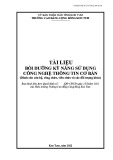
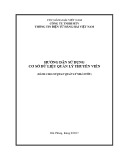
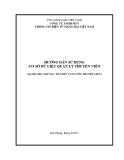





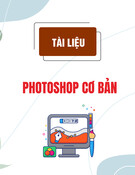

![Đề thi Excel: Tổng hợp [Năm] mới nhất, có đáp án, chuẩn nhất](https://cdn.tailieu.vn/images/document/thumbnail/2025/20251103/21139086@st.hcmuaf.edu.vn/135x160/61461762222060.jpg)

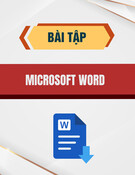
![Bài tập Tin học đại cương [kèm lời giải/ đáp án/ mới nhất]](https://cdn.tailieu.vn/images/document/thumbnail/2025/20251018/pobbniichan@gmail.com/135x160/16651760753844.jpg)
![Bài giảng Nhập môn Tin học và kỹ năng số [Mới nhất]](https://cdn.tailieu.vn/images/document/thumbnail/2025/20251003/thuhangvictory/135x160/33061759734261.jpg)
![Tài liệu ôn tập Lý thuyết và Thực hành môn Tin học [mới nhất/chuẩn nhất]](https://cdn.tailieu.vn/images/document/thumbnail/2025/20251001/kimphuong1001/135x160/49521759302088.jpg)
